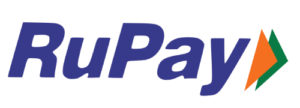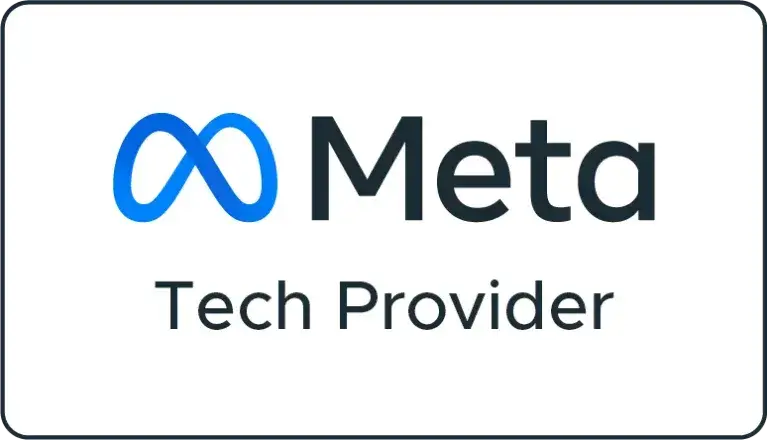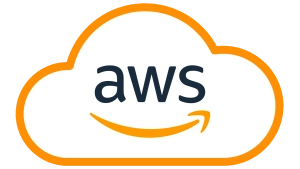E-learning Marketing: Best Practices for Boosting Enrollment in 2024

The Best Practices and Tips
Understanding Your Audience E-learning Marketing
Online classrooms are a fast-paced environment where geography does not determine boundaries – and your platform’s marketing is the opportunity to brighten like a star and conquer the world with enrollment. The popularity of e-learning marketing has been increasing significantly in the past years. Moreover, due to the lockdown and the pandemic limitations, the majority of educational programs pivoted to online learning. For this reason, the e-learning marketing approach to this particular field is highly relevant.
Segment Your Audience
Is Your Audience Right? Segmentation is Key When you would like to start an e-learning marketing campaign, you have to know your audience well. Divide it into several similar groups according to demographics, lifestyle features, and, of course, learning preferences. Thanks to the acquired information, you can run different campaigns that would be especially interesting for each group of students.
Create Relevant Courses
Create Courses That People Need The course’s peculiar content regarding e-learning marketing should be responding to the students’ daily concerns. Firstly, it has to be exciting. Second, it should be keyword-rich and attractive for article writing and SEO. Third, it should be publishable.
Utilize Social Media
Social Media Is a Key to Your Audience Another essential and simple method to reach the audience is the brand’s pages on social media. Be active on Facebook, Instagram, and LinkedIn.
Email Marketing Approach
Try the following Email Marketing approach An Email list you create can ensure successful contact with potential students. Send them a one-off promotion, a sneak peek of the course, or a periodic issue of a newsletter. Another way to build your platform’s visibility is to find some influencers from your niche and cooperate. Pick influencers whose values appeal to you. They will spread the word about you and your courses!
Remember these tips!
- Search Engine Optimization – Optimize your website and course pages to rank at the top of the search results and attract high-quality traffic oriented toward your services. Select strategic keywords and optimally allow your content to rank for them.
- Paid Advertising – Combine your organic marketing strategies with paying channels on Google, Bing, and various social media networks. Create ad campaigns designed to target potential buyers and students according to their online behavior, interests, and demographic data.
- Webinars and Live Events – Use these to show your audience how authoritative you are and to connect with them with real-time interaction. Share useful information, answer questions, and provide promotions.
- Offering Free Trials and Discounts – Provide free trials and discounts on E-learning marketing platforms to attract otherwise uncertain students. They will choose your platform to enroll in your e-learning marketing courses.
- Building Trust through Reviews and Testimonials – Create reviews from satisfied students. Build trust for your prospective students. Share some success stories from the students who took your courses.
Best Practices in Marketing E-learning Marketing Platforms To Increase Enrollment
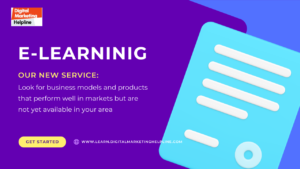
The e-learning marketing space has grown tremendously, especially since most institutions have started offering more online courses due to COVID restrictions and how people perceive sitting in a class for more than an hour at a time. Marketing E-learning Platforms have become a means of ensuring that your online university, high school, or institute is the number one choice for students looking for E-learning marketing.
Understanding the Audience
Before jumping into E-learning marketing in any form of an e-learning marketing platform one must understand the audience. The audience understanding sets a base for all the marketing strategies as there will be no way to check if your voice will reach them or not without a sense of the target.
1. Demographic analysis
Start with markers of age, gender, location, education, and occupation levels among others. It’ll help to create the content that you speak or that the message speaks to particular groups.
2. Psychographic profiling
Delving into the audience’s choices, such as interests, habits, cultural sensations, and values, also forms a certain image of the content you want to create.
3. E-Learning Marketing preference
How to use e-learning marketing and surveys as means of delivering the content to the consumer is also a factor. Some of them may prefer visual content over prose, while others may prefer interactive learning as opposed to self-paced, non-interactive learning modules.
Needs Analysis
One must also make a proper needs analysis presentation on the problems realized in the learning journey.
Feedback Collection
Collect insights from your current audience through surveys, interviews, or feedback forms. Actively listen to how your audience is approaching the current offerings to refine them or to develop new courses or features that resonate with your audience.
Competitive Analysis
At this point, you should Understand what the competition is doing and their audience and remain inclined to spot the gaps and the positioning opportunities. You will have to understand what the other players are saying find out the most promising gaps to zero in on, and direct your messaging to work on the point of unique value that will attract the salivating prospective learners.
Content Creation and Optimization
A platform’s success in any product, especially e-learning marketing, is majorly determined by the type of content being given out. The guidelines will remain instrumental in creating and optimizing content.
Need Analysis
After proper research, you are capable of understanding what the target audience needs, likes, and what they find challenging and making sure your courses are tailor-made to meet their needs.
Quality Content: continuously create interesting content. Real-life examples, case studies, and practical exercises can help to make good content.
SEO Optimization
Make use of the keywords present and seek to design new keywords featuring your course’s theme. Keywords must be quantified in the course title, description, headlines, and other content. Accessibility: Ensure your E-learning Marketing course is accessed by all people, including disabled persons.
Quality
Assure a measure of content quality more valuable than quantity. Accuracy, reliability, timeliness, and professional editing have been aptly applied. Interactive Elements: Students are compelled when they see some interactive elements. This can include quizzes, simulations, or gamification.
Regular Updates
Make sure to follow trends and regularly redo your course material based on learner input, industry trends, and E-learning marketing platforms, which are trends that are widely agreed upon.
Mobile Optimization
Make sure your content can be accessed on every screen by making it responsive.
Social Media
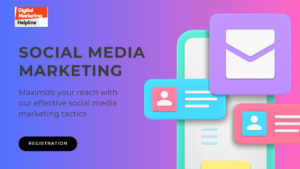
Choose a Platform
Social networks with the demographic and usage patterns of overhead customers work better. For example, LinkedIn is more formal for your social media classes, while Instagram appears visual.
Share Content
Post to show your audience what you put in all lessons and post often
Encouragement
Advance interaction with a survey by asking little queries and initiating a talk with followers
Email Marketing
Fundament List
Provide your tourists with some free bonus incentives, like tools, deals, special articles, or anything else. If they give you an email to get such gifts, which should be for clients only be certain to receive entry to an email list
Segmentation
Divide clients into Interests by class engagement, or interactions to make a targeted email list
Automation
Use an email connection to generate leads; automate cc, activation, and membership enhancement
Study
What your audience demands, what it’s involved in, and what kind of interests on your site remains; size influencers and their following, as well as other experts on IG, Linked In, and Twit.ewitness.apache.org
Collaboration
By collaborating with influencers in a joint promotional strategy, webinars, or market programs, you can boost transparency and, as a consequence, purchase course credits. In combination with the two above-mentioned procedures enacted correctly, the need for a course should be rising.
SEO
Keyword Research
When uploading keywords, use Google Keyword Planner, SEM, or Ahrefs Rush. Study search terms target traffic navigates to sift through the learning classes offered.
On-page Optimization
Create an SEO-friendly structure in which to put the selected keywords at the following: keywords at the page level, in the page name and page description, and existing keyword expressions in the text, with the text structure being user-friendly Quality content. Constantly creating case studies, submitting useful statistics, publishing educational videos, and the most diverse tutorials, etc., reduced approximately 12 percent of the total 88% of incoming traffic from organic traffic-directed Link Building. By receiving quality backlinks from other authority’s websites related to e-learning marketing, you increase the authority of your websites. Need point of contact with well-matched.
Advertising
Paid Platform Selection: Use advertising platforms such as Google Ads or Bing Ads according to your target audience demographics, to what extent your target audience performs this action, your target audience’s personal preference, advertising platform scope, Social Media advertising platforms like Facebook, Instagram, LinkedIn, Twitter, and much more ad space allow connecting with a business model that has the smallest possible scope.
Audience Targeting: use the ad platform’s advanced targeting capabilities to reach potential students who have expressed interest in courses like yours via filters that include age, location, interests, and online behavior. Make your audience targeting as precise as the proportion allows. Ad Creatives: Develop visually appealing, concise ad creatives, including the most appropriate value proposition. Do not forget to succinctly phrase the customer’s benefits. Add visuals and videos.
This technique helps to maximize the number of people who will reach the ad. Budget Discipline encourages a culture of putting limits on preset budgets for each ad campaign and monitoring its performance at regular intervals. When you see the winner, you may increase the conversion budget and drop the losers.
Webinars and Live Events: Conduct short but engaging sessions whereby participants can become more active. Use polling and other technology that will give a picture of speakers from the audience tab.
Value-add insights: Next, share insights and tips that are connected to your course topics as an example. Share industry trends and secrets that can help you maintain your instructor’s credibility. Q&A Session: You have to leave room for dialogue. Gain the participants’ assurance by addressing their main concerns.
Exclusive Discounts: Finally, encourage the consumer to act through discounts for both our webinars and live events. They should be characterized with an element of scarcity to ensure that the user feels the urge to act when they view the eventuation.
Incentivizing Potential Learners: Include
Free Trials: Your potential students in e-learning marketing should be able to try your product to ensure its value. Make the trial time-bassed to ensure the user goes through the course properly before they end it. Extend the time if the product is thick administrative.
Discounts: Use course discounts to pull a broad audience for the discounted options on the e-learning marketing platform. Explore seasonal discounts, bundled offers seasonal comprising, and refer-based opportunities
Highlight Benefits: Highlight what the user will get by signing up for the costless trial. Others should be in the market with these unique signal points of your course.
Call-to-Action: The marketing copy should include a strong call to prevent the potential student from not taking the offer and signing up if the offer chosen is yours.
Reviews and Testimonies: Positive reviews and testimonies from satisfied students can also improve your trust and credibility. Below is how to go about it:
The essence of testimonials is to build your authority or reassure your viewers that they did well, so why not take Good ones to your advantage? Instead of: retroactively rewarding students for their faith, Get Feedback.
a. Feedback first: Email them a survey or your faith and a quick summary of the study.
b. Show compassion for them: Showcase reassessment – Push the push on your website
i. Positive Quote: Use cogent positive quotes and discipline benefits.
ii. Video testimonials: Utilize videos of your satisfied students to add an extra layer of authenticity and trust.
The first step is to cure the negative perception of the push; the second step is this: want your students to understand that their fellow students were once hesitant and thrown to believers. These are not robots; they are human.
Encourage Sharing
Finally, make sure that your current student shares their successes and experiences on social media platforms and all other review websites. As mentioned earlier, user-generated content has a lot of power for prospective learners.
Continuous Analysis and Optimization
Performance Monitoring
Using analytics, you should be keeping a close eye on the campaign’s performance on all the different platforms. The monitoring of key metrics like click-through rate, conversion rate, and overall level of engagement can help you understand one performance area that needs improvement.
Data Analysis
With this data collected, you should easily answer their audience’s question on how well your marketing performance is or how you can use your data and A/B tests and multivariate tests to help you know strategies based on data insights.
Refining Studies
Continue refining your strategies based on the data analysis. It is important to make sure that your resources are allocated to the channels that give you the highest ROI; otherwise, you will always need to try new things around to make sure you give your best.
Adapting to Trends and Innovation
Industry Research
The best way of staying current is to follow the latest tweets and data readings, attend conferences, and network with fellow professionals.
Embracing Technology
Use new technologies to help improve the e-learning marketing platform experience. Technologies like AI, AR, VR, and gamification will make interactive content more likely to ensure you have students who are more engaged.
Pedagogical Innovation
How can you reinvent pedagogical innovation, for example, by trying a new personalization pedagogical approach and ideally including Microlearning and adaptive learning? The most efficient way to do this is by listening to your student’s audience.
Measuring Success
Define Your KPIs
Create some KPIs that link back to your e-learning marketing objectives: the number of website traffic, the number of leads generated, and the number of conversion rates. You can also create some month or quarter benchmarks to measure your success.
Tracking Your Metrics
Once you have your measurements, you should use an analytics tool to measure everything. From there, you should monitor your metrics to see how you are performing in different areas where you should focus on the next campaign.
Analyze the Results
Use this data to measure how effective your marketing efforts have been; E-learning marketing uses the data to measure which strategies worked and which strategies you will need to adjust for the next campaign.






